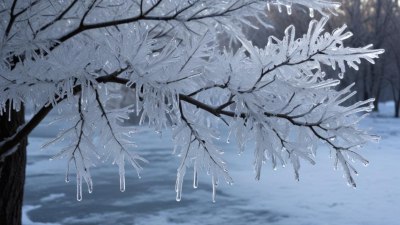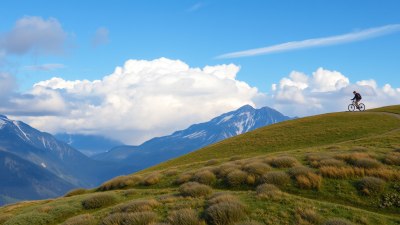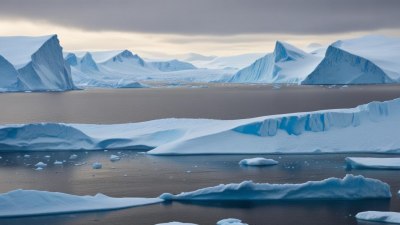Why Some Places Never See Snow: The Science of Warm Winters
Explore the scientific reasons why certain regions experience warm winters and never see snow.

Snow is often heralded as a winter wonderland, but not all places experience this chilly phenomenon. For many regions around the globe, winter brings rain, mild temperatures, and sometimes a complete absence of snow. Understanding why some places never see snow requires diving into meteorology, geography, and climate science. This article will explore the factors that contribute to warm winters and the absence of snow in certain areas.
The Basics of Snow Formation
To understand why snow falls in some places and not in others, it’s vital to comprehend the basic requirements for snow formation. Snow forms when water vapor in the atmosphere freezes into ice crystals. These crystals combine and fall to the ground as snowflakes, creating the white blanket often associated with winter. The key conditions for snow formation are temperatures at or below freezing, sufficient moisture in the air, and suitable atmospheric conditions.
Temperature: The Essential Factor
The most critical factor in whether a region experiences snow is temperature. For snow to form and accumulate, temperatures must be at or below 32°F (0°C). Regions that remain consistently warmer than this threshold throughout the winter will typically see rain instead of snow. For instance, tropical and subtropical regions often have mild winters where temperatures rarely approach freezing, leading to an absence of snow.
The Role of Geography
Geography plays a significant role in determining winter temperatures. Areas located near the equator, such as parts of Central America, the Caribbean, and northern Australia, have warm climates year-round. The equatorial region receives consistent sunlight, maintaining warm temperatures even during the winter months in the northern and southern hemispheres. Coastal regions may also experience milder winters due to ocean currents that regulate temperatures, preventing the air from getting cold enough to produce snow.
Climate Zones and Their Impact
Earth’s climate zones significantly affect whether regions experience snow. The Köppen climate classification system categorizes climates into five primary groups: tropical, dry, temperate, cold, and polar. Regions within the tropical category, such as Hawaii or the Amazon basin, have climates that are too warm for snow. On the other hand, polar regions, while cold, have little moisture to produce snow. Thus, not all cold places see regular snowfall.
The temperate climates, which include parts of Europe and North America, experience the most variability in snow. These regions can see both warm and cold winters, often depending on specific weather patterns and the influences of ocean currents.
Ocean Currents and Weather Patterns
Ocean currents significantly impact weather patterns and climate. Warm ocean currents can elevate temperatures in nearby coastal areas, leading to milder winters, while cold currents can cause drops in temperature. The Gulf Stream, for example, warms the eastern United States and western Europe, often leading to rainy winters instead of snowy ones. Furthermore, phenomena such as El Niño can alter global weather patterns, leading to warmer winters in several regions, even those that typically receive snow.
Urban Heat Islands
Urban areas are often warmer than surrounding rural areas due to what’s known as the urban heat island effect. Cities comprise asphalt, concrete, and buildings that absorb heat during the day and release it slowly at night. This phenomenon can increase temperatures in urban environments, making them less likely to experience snow. Cities located in temperate regions may escape snow altogether due to this effect, even when the surrounding areas are cold enough for snowfall.
Elevation and Topography
Elevation also influences snow presence. Areas at higher elevations generally see colder temperatures and more precipitation. In contrast, low-lying areas can remain warm enough for rain instead. Mountainous regions can create rain shadows, which are areas that receive significantly less precipitation due to mountains blocking moisture-laden air. The result is that while the mountains may receive snow, the valleys below might only see rain during winter months.
Climate Change and Variability
Recent trends indicate that climate change is impacting snowfall patterns. As global temperatures rise, many regions are experiencing warmer winters, leading to reduced snowfall. Areas that traditionally receive snow are beginning to see an increase in rainfall instead, altering ecosystems and wildlife patterns. The long-term implications of climate change could lead to more regions that never see snow, reshaping landscapes and natural habitats.
Human Impact on Climate
Human activities, such as industrial emissions and deforestation, contribute to climate change and may exacerbate the warm winter phenomenon. Urbanization increases the urban heat island effect, further insulating cities from snow. Energy consumption emissions can also increase greenhouse gases in the atmosphere, trapping heat and leading to warmer winters globally.
The Future of Snow in a Warming World
As we look to the future, understanding and addressing the factors that lead to warm winters is crucial. Identifying the patterns and reasons why certain areas never see snow can help in formulating conservation and sustainability strategies. Advocacy for reducing carbon emissions and promoting green energy sources will play a key role in mitigating climate change impacts, including shifts in winter weather patterns.
In conclusion, understanding why some places never see snow involves examining a blend of temperature, geography, climate zones, ocean currents, urbanization, and human activities. As we continue to study these aspects, it becomes increasingly imperative to recognize the effects of climate change and our role in shaping a sustainable future. By grasping the dynamics that lead to warm winters without snow, we open the door to better preparedness for atmospheric changes that impact our planet.











